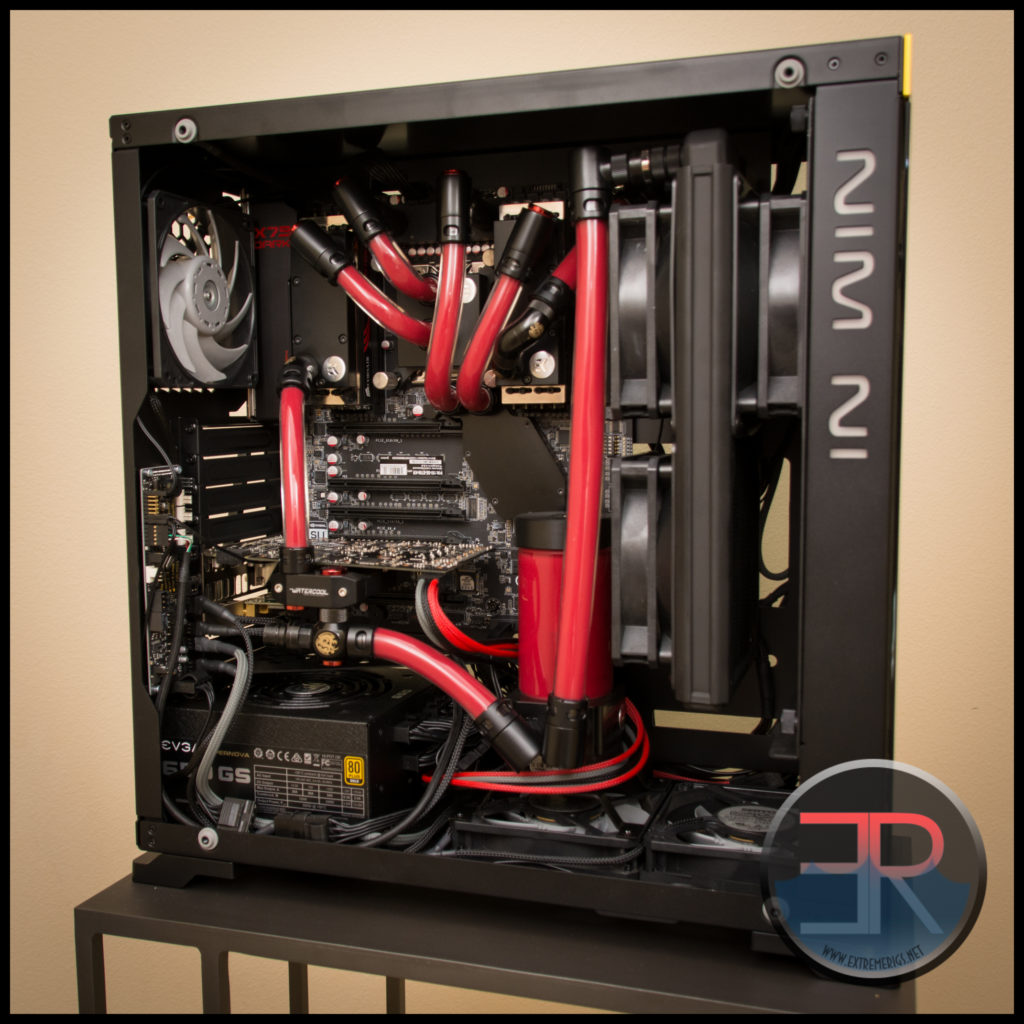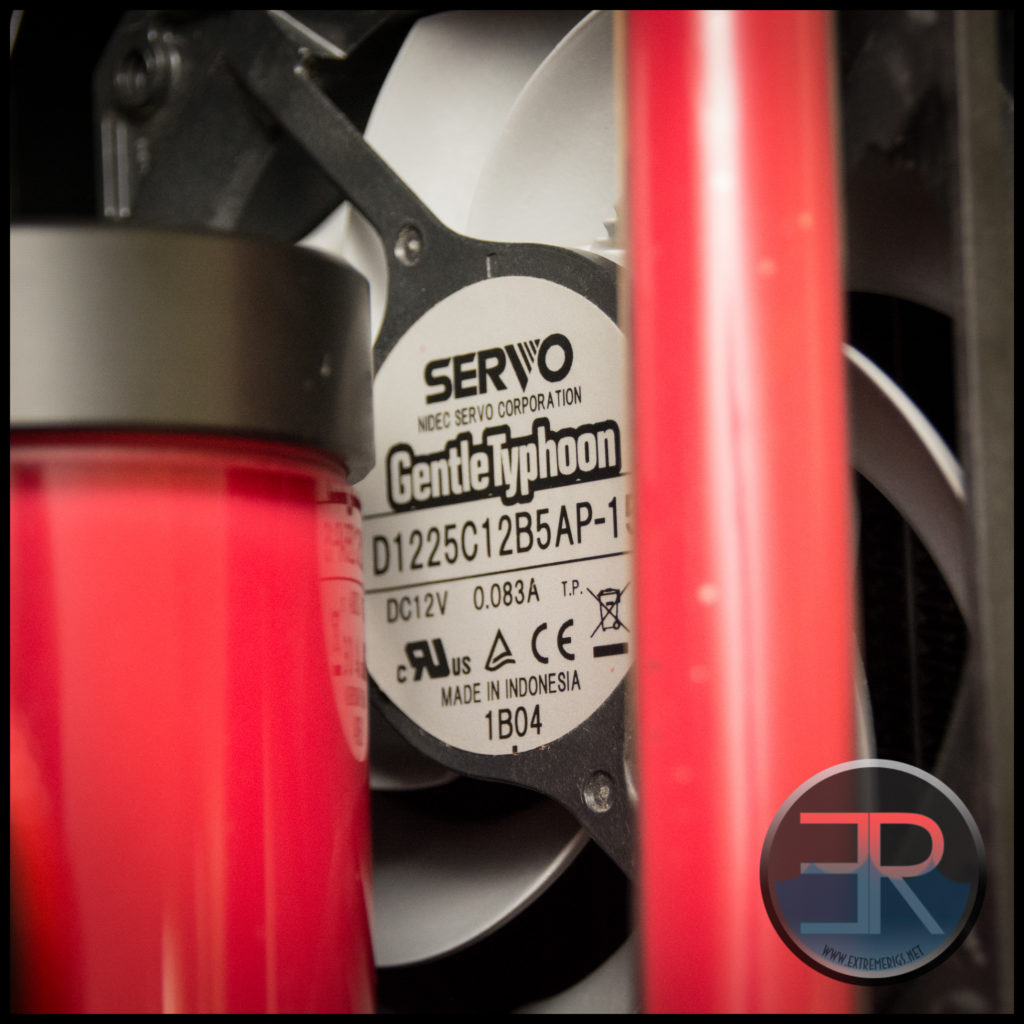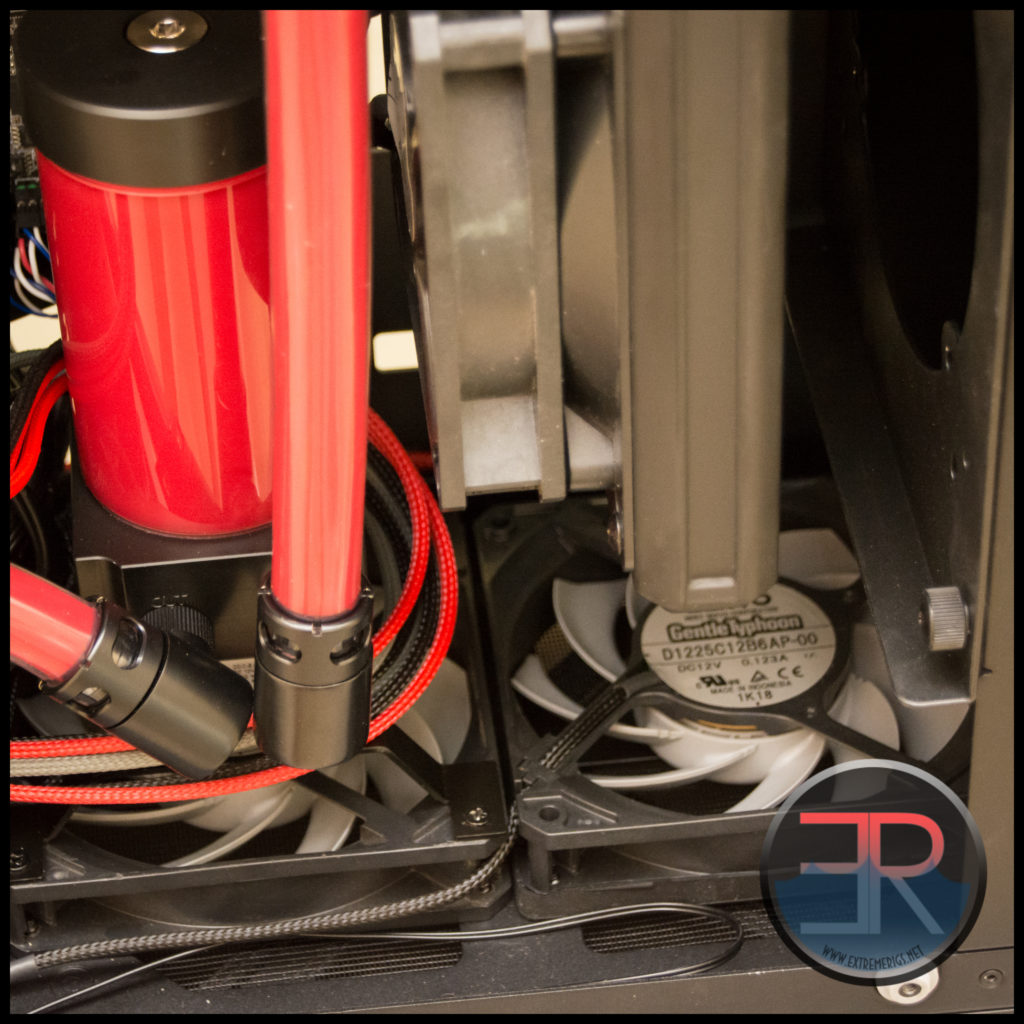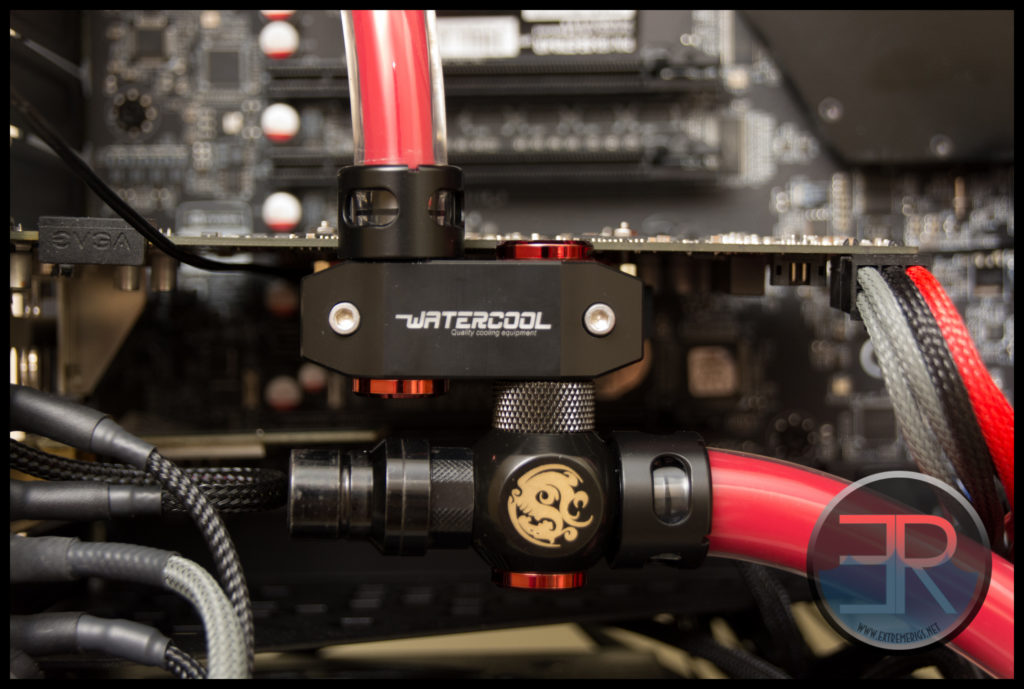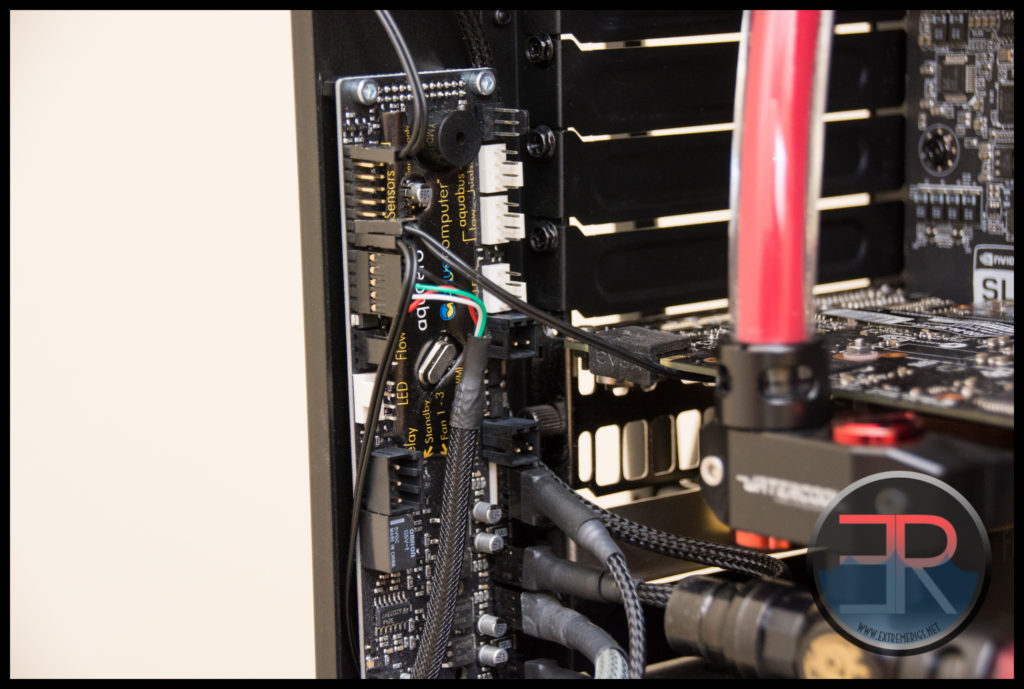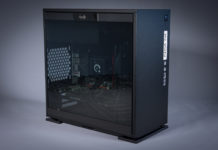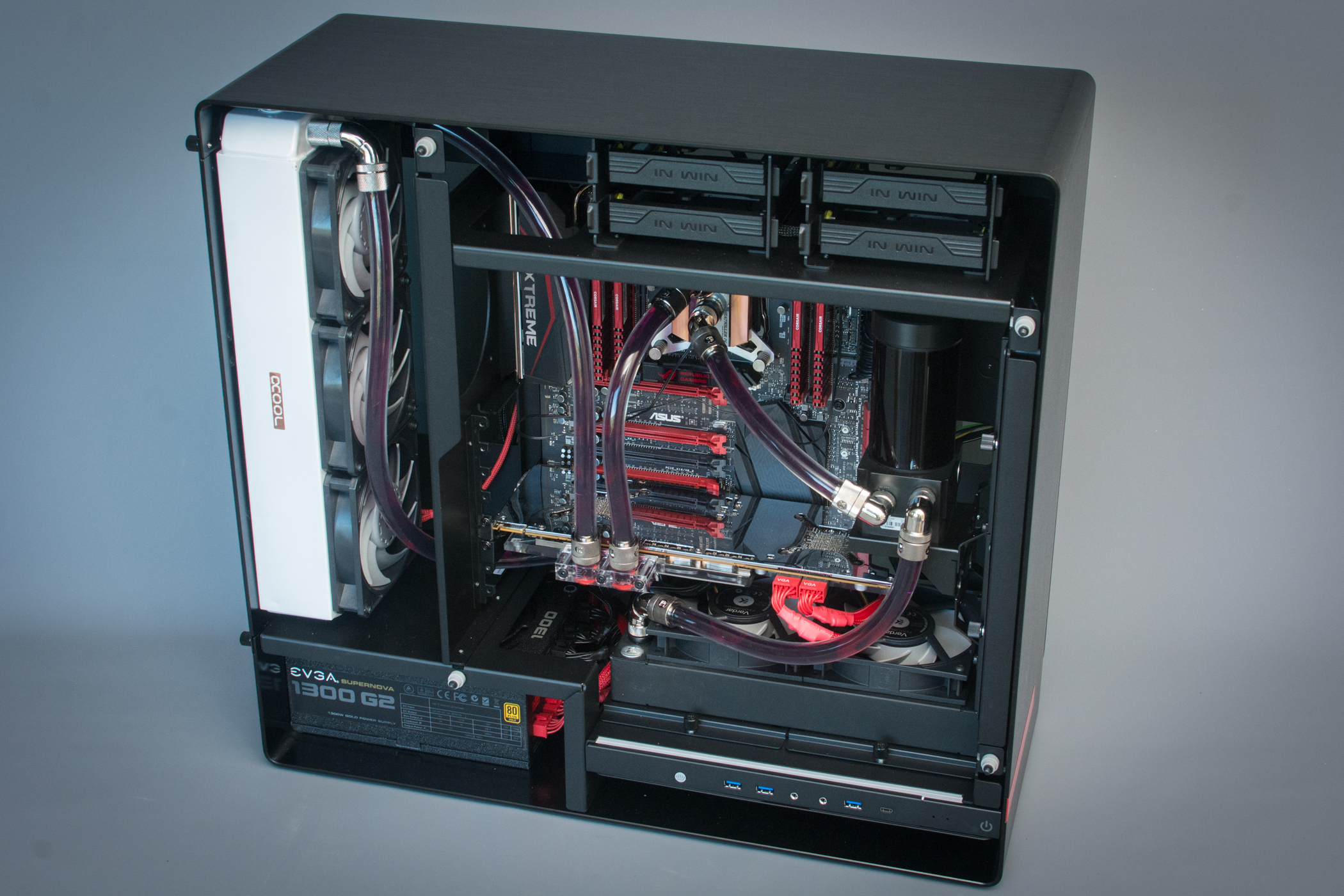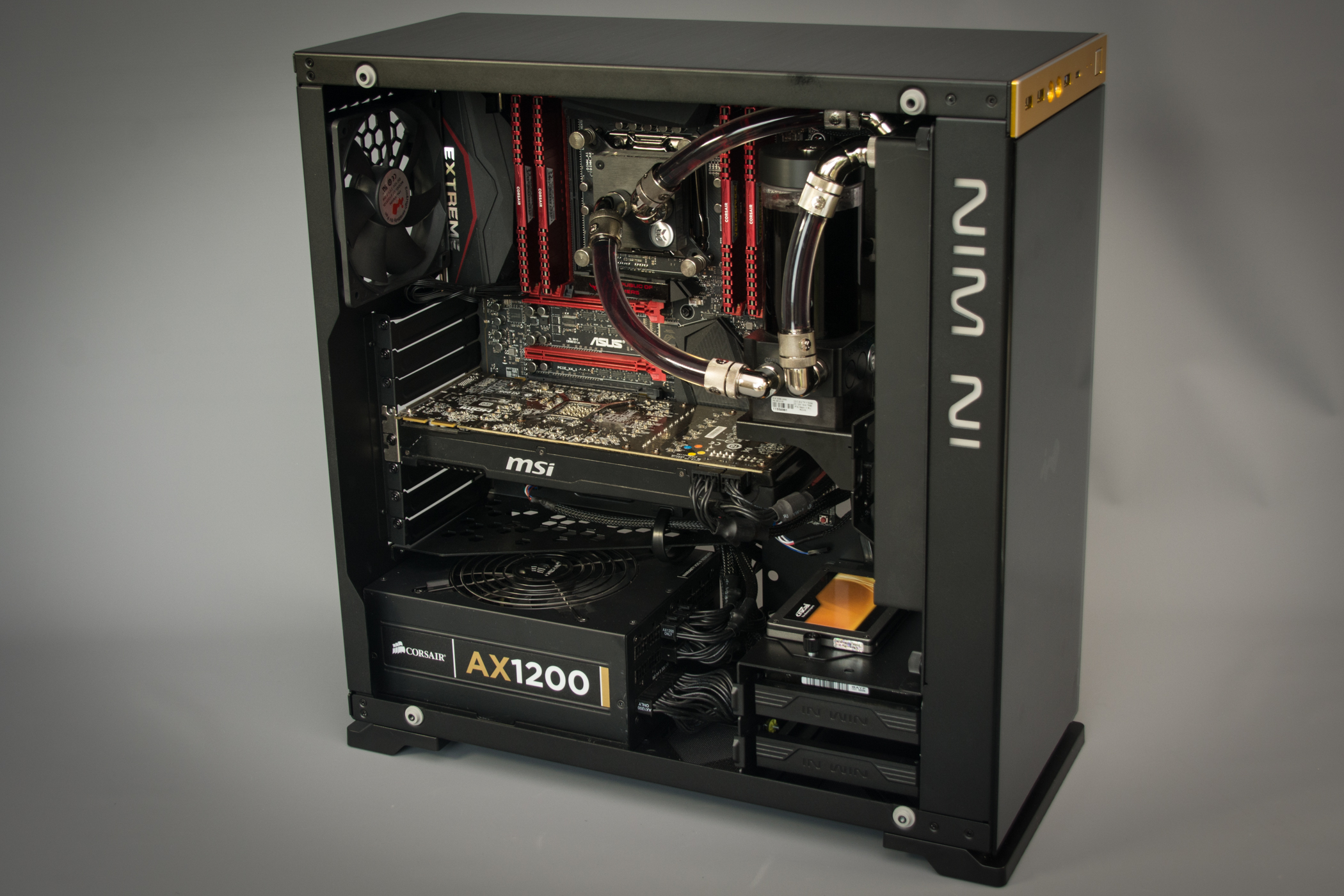We recently reviewed the In Win 805 case. During that review we found that although beautiful the case struggled to get heat out with the default fan setup. Of course any builder is unlikely to stick with the basic fan setup so it felt like time to do a real build in the case and see what could be achieved. This is how we had the case setup for the review:

The loop was minimal – a 240 based radiator, a ddc pump and a cpu only loop. In testing we loaded the stock 5820K with prime and the temperature deltas quickly approached 20C. At this point we shut the test down because we were uncomfortable with the temperatures.
Because we tested with the stock case fans, therefore there were no intake fans, and the exhaust fan was an In Win fan which was on the wimpy side.
This is the new build which I’ll be using as an HTPC:
The build is a bit messy with the wiring and some of the layout was constrained by wanting to reuse parts that I had available. However it’s a functional build, not a modding showcase.
Initially I had planned to use a 360 radiator. Once the hard drive cages are removed (SSD mounted on the back of the motherboard panel) – there is space for a 360 radiator. The radiator mount however does get in the way so you may need to modify it. However I found it impossible to mount a 360 and have both intake fans at the bottom of the case mounted. This was a deal breaker for me because I knew the case really need all the intake it could get. I downsized to a 280 radiator – the award winning Nemesis GTS. A 280 radiator gives a very similar amount of frontal surface area as a 360 radiator so this was no real hardship. However even though a 280mm rad normally takes 140mm fans I didn’t want to change fans. Gentle Typhoons are my favorite fans of all time and still have the best airflow to noise ratio.
I used the 2150 RPM versions (label shows the 1850RPM version – but the label is incorrect) so as to really be able to get the heat out if needed. Because the fans were 120mm, I used a Bgears 120mm to 140mm adapter. Martin’s Liquid Lab had previously shown this setup to beat out any 140mm fans.
Part of the struggle with water cooling in the 805 is that the radiator struggles to get cool air from the intake. Instead it tends to recycle warm air from the radiator exhaust. For this reason I decided to offset the radiator more than normal. By using one fan at the top to space the radiator away from the mounting plate I gained an extra 35mm of “gap” between the lower half of the radiator and the radiator mount:
This mean that the intake fans at the bottom of the case had a less restricted path to the radiator intake. It also meant that more air from the front intake fan would be going to the front of the radiator and not the exhaust.
Luckily the 805 can handle a fairly thick radiator so I was able to get away with this pseudo push/pull setup while using a slim radiator. I still had space for a cylinder reservoir and DDC pump (although my first choice D5 did not fit). The reservoir even left enough space for two short GPUs or one long GPU. I chose to fit a short GPU – a 650TI boost as this will only be streaming video.
Lastly I was able to mount an aquaero LT by the PCI slots:
This was really the only place left to fit it, and although it means the wiring is a little messy, it’s not the end of the world. It does make me wish that AquaComputer’s USB cables were fully sleeved however. For a HTPC having some smart fan and pump control makes a lot of sense – while motherboards are much better than they used to be at this the ability to calculate a temperature delta and base a fan profile on it is awesome. Once the sensors were dialed in the rig was almost perfectly silent with a temperature delta of 3C.
The system was a fully watercooled overclocked 4930K with 8x4GB sticks of watercooled Corsair DDR3. The motherboard was also fully watercooled. The GPU had a universal GPU block fitted.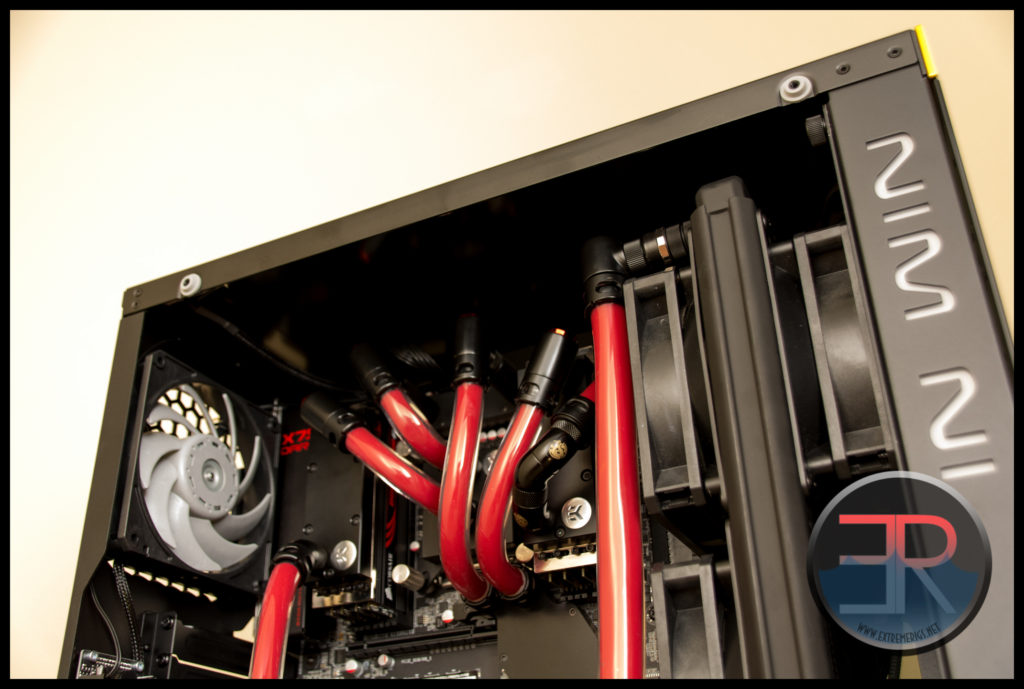
So the heatload now was far more than our previous test case which ran at stock clocks and had less components in the loop. Loading the system with Prime95 now caused temperatures to stabilize at an 8C delta with the fans on full at 2100RPM – significantly better than the 20+C we saw in the previous testing.
So the lesson to learn here is to take the time to analyze the performance of your case and cooling. Having temperature sensors to measure internal, external air temperatures as well as coolant temperatures helps with that. Sometimes you may not realize that a radiator is being strangled or that you’re having a hotbox problem. “Knowledge is power” and that data meant we could be comfortable knowing that a case we had had problems with was now perfectly good.
That’s all for the In Win 805. A lot of people often ask me what components we use in builds – so here is a list. A big thanks to all those companies who have sponsored some of these parts for various reviews, builds and projects:
In Win 805
EVGA x79 Dark Motherboard with Natemandoo VRM and South Bridge Water Blocks
Intel i7-4930K with EK Supremacy EVO Water Block
Corsair Dominator GT 2133 DDR3 (8x4GB) with EK Monarch Water Block
EVGA 650 TI Boost with Watercool Heatkiller Universal Water Block
PCE-N53 WiFi PCI Card
Crucial C300 128GB SSD
EVGA 650 GS Power supply
AquaComputer Aquaero 5 LT Controller and Sensors
Hardware Labs Nemesis GTS 280
Scythe/Nidec Gentle Typhoon 2150 RPM Fans mounted to Bgears adapaters and sleeved with MDPC-X
EK DDC CSQ 140 PWM Pump and Reservoir with EK Uni 120mm Mounting bracket
Monsoon Free Compression Fittings with Monsoon and Bitspower rotary adapters
Primochill Advanced LRT Tube
Mayhems Pastel Dye







